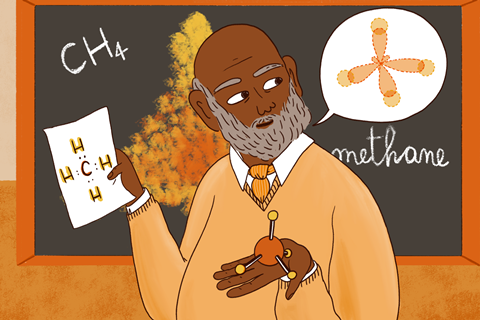Models support scientific understanding, but to be effective, plan their use carefully
Models are an essential part of developing and sharing scientific knowledge. What type of model you use is often dictated by the concept you are teaching. For example, I always use 3D models when introducing allotropes of carbon, but the PhET Energy skate park animation works wonders when discussing the relationship between gravitational potential energy and kinetic energy. Whichever type of model you use, they are vital to student understanding.
Models provide representations of scientific concepts that can make the ideas more understandable to learners. However, no model is perfect, no matter how carefully thought out they are.

Pupils don’t necessarily understand why we use models. They don’t appreciate the direct link between the model and the concept it represents. When I asked my students, they naively thought that models are near-exact replicas of real life. To get students to understand why models are necessary as well as how they aid learning, you can use the Focus, Action and Reflection (FAR) approach. I adapted it so my pupils could reflect on models too.
Download the adapted FAR approach checklist as MS Word and pdf and student question sheet as MS Word and pdf.
Models and misconceptions
I can’t discuss choosing models without addressing the elephant in the room – misconceptions. Models and misconceptions go hand in hand; models can be used to challenge misconceptions and change thinking, but if not used correctly, they can reinforce or even create new misconceptions. Pupils must be secure in understanding the scientific concept first. If the model is introduced too soon, it may hinder learning. It’s also important pupils don’t just learn one example of a model. Multiple models reinforce a concept and can deepen understanding.
7 simple rules to boost science teaching
Click to expand and explore the rules
Build on the ideas that pupils bring to lessons
Help pupils direct their own learning
Use models to support understanding
Support pupils to retain and retrieve knowledge
- Pay attention to cognitive load—structure tasks to limit the amount of new information pupils need to process
- Revisit knowledge after a gap to help pupils retain it in their long-term memory
- Provide opportunities for pupils to retrieve the knowledge that they have previously learnt
- Encourage pupils to elaborate on what they have learnt
Use practical work purposefully and as part of a learning sequence
Develop scientific vocabulary and support pupils to read and write about science
Use structured feedback to move on pupils’ thinking
I recently used an analogy as a model. I likened a model to the scaffolding around a house when an improvement is being made. However, there’s no point improving a house, if the foundations are subsiding, for example. Before the scaffolding is used, everything needs to be checked. I told pupils I wanted their knowledge to improve too, and using a model helps do this.
My analogy explicitly showed pupils how scientific models in lessons support understanding – the scaffolding – but aren’t exactly true to real life. It likened the checking to the recall of facts at the start of the lesson. The class’ response?
‘Miss, is this because you’ve just bought a new house?’
This failure of my analogy proves that students need to be familiar with the idea and to understand the scientific idea behind the model first. I use low-stakes retrieval roulette to confirm certain facts can be recalled before introducing a model.
Among the different models is the mental model – a pupil’s internal understanding of a concept. Therefore, at the start of every topic I gather the class’ preconceptions (ideas and mental models they already have) and identify any obvious misconceptions, for example using diagnostic questioning. This insight into their understanding guides my lessons.
When choosing a model, I use the Focus section of FAR. I spend most time on the question: ‘Is it a difficult, unfamiliar, or abstract concept or process?’ By breaking down a scientific idea into its intricate difficulties, not only will you guarantee you don’t introduce the model too early, you can pre-empt questions you will get asked when using your model, and will be more prepared for the Action section of FAR. Using ‘discuss, likes and dislikes’ you can create a routine that pupils will start to automatically use when introduced to a new model – interrogation. Finally, by constantly reflecting on the effectiveness of models, and improving for future use, you can decide whether to revisit the concept, use the same model again or introduce a new model.
Conclusion
I regularly use the FAR approach to guide which models I use, and also ask my pupils to reflect on their understanding of models. Once they understand why they’re necessary, they can then develop the skills to critique them.
This article is part of the series 7 simple rules for science teaching, developed in response to the EEF’s Improving secondary science guidance. It supports rule 3b, Select the models you use with care.
Downloads
Teachers: Using the far approach
Word, Size 54.55 kbTeachers: Using the far approach
PDF, Size 49.76 kbStudents: Understanding models
Word, Size 51.88 kbStudents: Understanding models
PDF, Size 71.33 kb










No comments yet